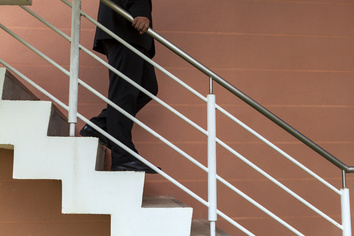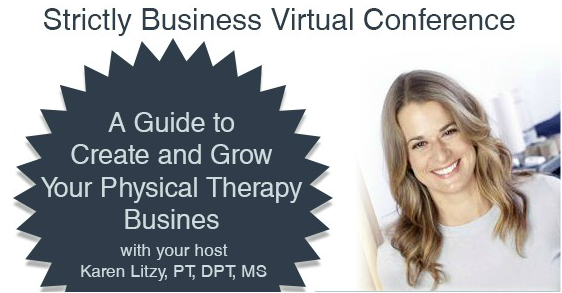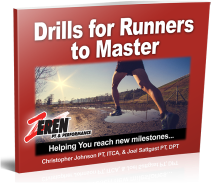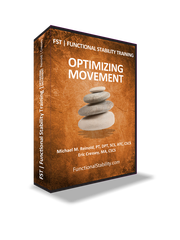|
If there is one assessment that I perform in working with injured runners beyond watching them run, it is undoubtedly the lateral step down (LSD). The LSD is a simple, efficient, moderately reliable, and relevant assessment that yields a wealth of information when considering the performance demands of running. It tells you close to everything a clinician needs to know with the exception of a runner’s tolerance to hopping, cadence, and breathing strategy. Since a good portion of running related injuries (RRIs) tend to occur during the stance phase of running, the LSD gives clinicians, coaches, and trainers with a window into any potential impairments that may negatively impact one’s running while possibly putting them at risk of injury. Before conducting an LSD assessment of an injured runner, however, it is important to first understand that during the running gait cycle that knee absorption during the stance phase is upwards of 45 degrees of knee flexion. The examiner should therefore set the height of the step to ensure the performer cycles through the 0-45 degree range of knee flexion. Additionally, the performer should also be barefoot to eliminate the potential influence of footwear as a shoe with a heel to toe differential may disguise any dorsiflexion limitation (apologies for demonstrating with shoes in the vid below). From there, I typically demonstrate the movement to provide the runner with a model of performance before having them practice a couple times to get acquainted with the movement. Special attention should be paid to ensure that the foot of the stance leg is straight and at the edge of the platform while the great toe is pointed towards noon on an imaginary clock. The non-stance leg should be held in full knee extension while maintaining the foot in a level position. The hands should also be positioned on the pelvis to ensure that they do not augment the performer’s balance. I typically perform 5 repetitions per side. Prerequisites 1. Clear understanding of how to perform the test 2. Completion of the LSD on the non-involved extremity 3. Ability to fully weight bear through the affected extremity Equipment 1. Stepper or platform with adjustability 2. Level surface/ground for the platform for rest on Information that We Obtain from the LSD Assessment 1. Toe dexterity 2. Single leg postural stability 3. Ability to progress the leg over the foot (ankle dorsiflexion) 4. Tolerance to eccentric and concentric closed chain contractions 5. Adequate hip and lumbopelvic neuromuscular control? 6. Breathing strategy Possible Compensatory Strategies to Monitor 1. Excessive subtalar pronation 2. Dynamic knee valgus 3. Femoral internal rotation 4. Hip adduction/contralateral pelvic drop 5. Excessive hip flexion
0 Comments
This past Friday, I had the distinct privilege to do a Q&A session with Richard Severin PT, DPT, who is a future PhD student at the University of Illinois - Chicago specializing in cardiopulmonary and orthopedic physical therapy. I specifically reached out to Rich to have him share his perspective and advice in terms of what rehabilitation professionals, trainers, and coaches should be doing from a screening and safety standpoint in working with distance runners and triathletes. As you will soon discover, Rich possesses an incredible command of the field. Perhaps his only pitfall is that he is from Philadelphia (Im a Pittsburgh boy - cross state rivals). Although he is too humble to disclose this, Rich scored a perfect on his physical therapy board exam. Needless to say he is an incredible resource that will have a profound impact on the profession. Without further ado, Rich Severin folks... There are relatively pieces of footwear advice that I give to runners with absolute certainty. One of them, however, is the fact that we should always afford adequate space for the forefoot by selecting a shoe that provides appropriate width and volume at the level of the toe box to avoid cramming our feet. While I hate to use a diagnostic image of this nature as it may seem to be a scare tactic, I thought that it would make it readily apparent that runners should strive to take better care of their feet through ensuring proper fit. I gained first hand appreciation for the ill effects of running in a shoe that did not provide enough space for the width of my forefoot a couple years ago when I returned to visit my family in Pittsburgh over the winter holidays. In typical fashion, I went out for a mid afternoon with the only difference being that I was in a new pair of shoes. Despite initially feeling okay, I started to experience a sharp pain at the base of my second toe on the left side about five miles into my run. After stopping to loosen up the laces, which seemed to be a bit too snug, I tried running again only to find myself wincing with every step. Fortunately, I was able to make it home and was relieved to finally get out of my shoes and off my feet. Although the pain gradually subsided over the next few days while I gradually resumed pain free walking, I noticed that I had developed a toe gripping strategy on the left side (see video below) that most likely set in during that run as I was never aware of it prior to that outing. Over the next few weeks, I had to focus extensively on resolving this compensatory strategy of gripping my toes through practicing various toe dexterity drills before I was able to finally return to walking and running without issue.
So the next time you go to buy a new pair of shoes, make sure to select a shoe that is not only comfortable and defect free, but also that affords adequate width and volume in the toe box. Of equal if not greater importance, is to also select dress and casual shoes that do the same since we tend to spend a good deal of time in various shoes outside of our running footwear. Here's to foot health!
If you are a physical therapist and looking to refine your business and entrepreneurial skills, there’s a good chance that you will be interested in the upcoming Healthy Wealthy & Smart: Strictly Business virtual conference for physical therapists.
This unique online event will bring together over 15 experts in physical therapy and business. This virtual conference will serve as a guide to create and grow your physical therapy business. Please join me here: http://healthywealthysmart.com/?ap_id=1510 My colleague Dr. Karen Litzy, PT, DPT, MS is interviewing 15 amazing thought leaders — including me — and she’s putting all of those interviews together in one place. The Strictly Business virtual conference is a guide to help you create and grow your PT practice. The conference will include lifetime access to all of the videos, MP3 downloads of the video interviews, power point and/or notes for some of the interviews, work sheets for each module of the conference, and a bonus gift section with great offers from the speakers. Who: Dr. Karen Litzy, PT, DPT is joined by the following 15 experts: Dr. Shaula Alexander Yemini, Phd, Start up Consultant Alan Siegel, branding expert Gwen Simons, Esq, PT, OCS, FAAOMPT Greta Rose Zagarino, website creator Denise Kovalevich, PR maven Dr. Robert Worth, PT, DPT, MS, OCS, MTC, LAT Dr. Jeff Hathaway, PT, DPT Dr. Sandy Hilton, PT, DPT, MS Dr. Sarah Haag, PT, DPT, MS, WCS, cert. MDT, RYT Rick Gawenda, PT Chris Johnson, PT Tracy Sher, MPT, CSCS Jessica McKinney, PT, MS Karen Yankovich, LinkedIn expert Stephanie Voong, Social Media Queen (Faceboook, Twitter) Plus there is a Live and Learn module where you will learn about stories from PT entrepreneurs from around the country on what worked or didn’t work for their business, what they learned, and what advice they would give to other PTs. When: April 21, 2015 (Put it in your calendar now!) How much: Early Bird rate (April 6-20, 2015): $199.00 Launch Rate (April 21-May 5, 2015): $249.00 Conference Rate (May 6, 2015 onward): $299.00 Student Rate: $99.00 (this rate will never change!) This conference was created because the future success of the physical therapy profession goes well beyond clinical skills! All physical therapists can benefit from having a solid foundation and guide to becoming a PT entrepreneur! Onward! Chris
|
OUR LATEST
E-BOOK for RUNNERS MIKE REINOLD & ERIC CRESSEY'S FUNCTIONAL STABILITY PART 4
Archives
January 2018
Categories
All
|








 RSS Feed
RSS Feed